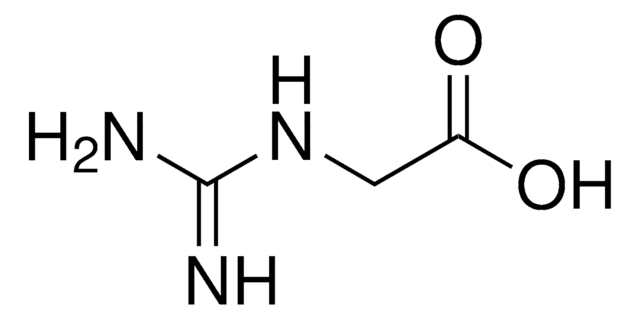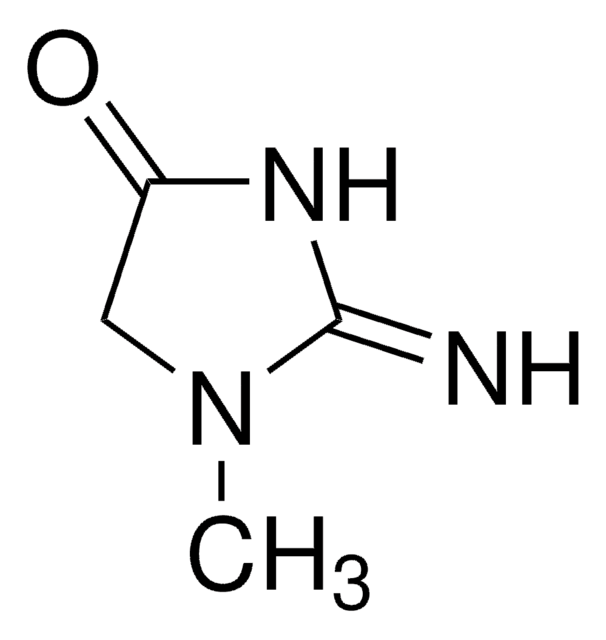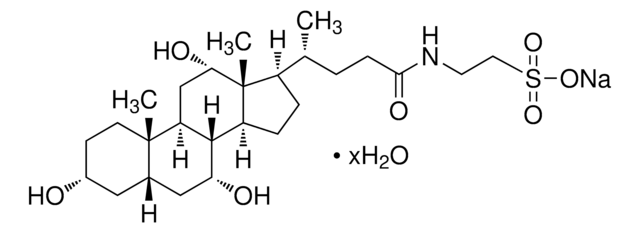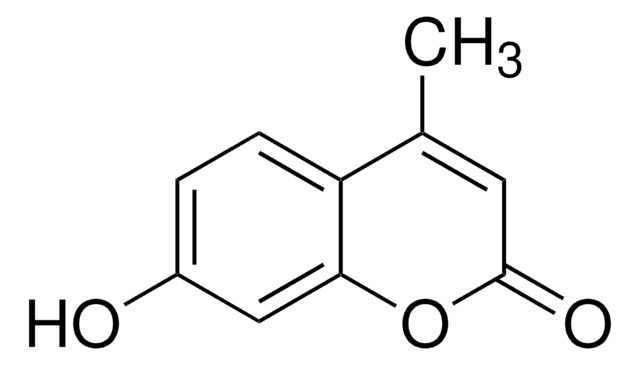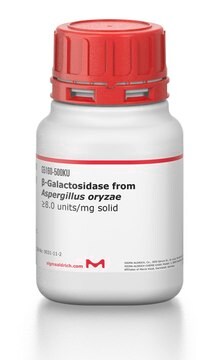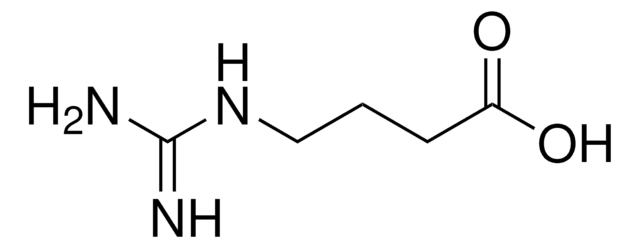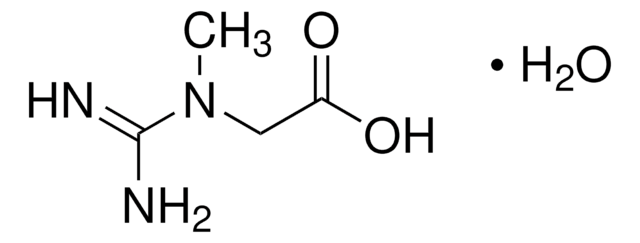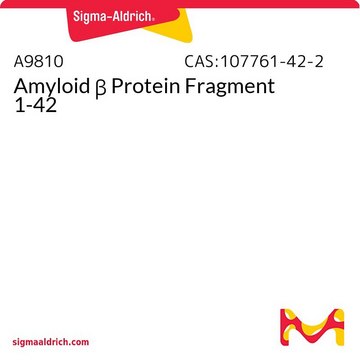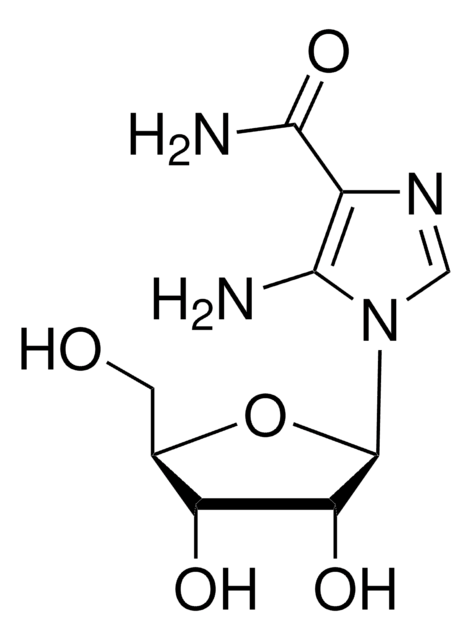G6878
3-Guanidinopropionic acid
≥97.5% (TLC)
Synonym(s):
β-Guanidinopropionic acid
Sign Into View Organizational & Contract Pricing
All Photos(1)
About This Item
Linear Formula:
HN=C(NH2)NHCH2CH2COOH
CAS Number:
Molecular Weight:
131.13
Beilstein:
1705262
EC Number:
MDL number:
UNSPSC Code:
12352209
PubChem Substance ID:
NACRES:
NA.26
Recommended Products
Product Name
3-Guanidinopropionic acid,
Assay
≥97.5% (TLC)
Quality Level
form
powder or crystals
color
white
mp
222 °C (dec.) (lit.)
storage temp.
2-8°C
SMILES string
NC(=N)NCCC(O)=O
InChI
1S/C4H9N3O2/c5-4(6)7-2-1-3(8)9/h1-2H2,(H,8,9)(H4,5,6,7)
InChI key
KMXXSJLYVJEBHI-UHFFFAOYSA-N
Looking for similar products? Visit Product Comparison Guide
Biochem/physiol Actions
β-Guanidinopropionic acid is studied for potential use during protein refolding as an anti-aggregatory molecule similar to L-arginine. β-Guanidinopropionic acid may be used to study its proliferative activity for endothelial cells contributing to wound healing. β-Guanidinopropionic acid is closely related to leptin.
Signal Word
Warning
Hazard Statements
Precautionary Statements
Hazard Classifications
Eye Irrit. 2 - Skin Irrit. 2 - STOT SE 3
Target Organs
Respiratory system
Storage Class Code
11 - Combustible Solids
WGK
WGK 3
Flash Point(F)
Not applicable
Flash Point(C)
Not applicable
Personal Protective Equipment
dust mask type N95 (US), Eyeshields, Gloves
Choose from one of the most recent versions:
Already Own This Product?
Find documentation for the products that you have recently purchased in the Document Library.
Customers Also Viewed
A Bexfield et al.
The British journal of dermatology, 162(3), 554-562 (2009-10-06)
Maggot therapy, utilizing the larvae of Lucilia sericata, has been reported to reduce the bacterial load within wounds and also to enhance wound healing. Maggot excretions/secretions (ES) have been shown to have a role in the success of maggot therapy.
Yoshinobu Ohira et al.
Bioscience, biotechnology, and biochemistry, 75(6), 1085-1089 (2011-06-15)
The effects of supplementation with creatine (Cr) and its analog, β-guanidinopropionic acid (β-GPA), on the differentiation of myoblasts and the numbers of nucleoli were studied in C2C12 cells. The cells were cultured in differentiation medium for 4 d. Then Cr
Inge Oudman et al.
PloS one, 8(1), e52879-e52879 (2013-01-18)
Creatine kinase plays a key role in cellular energy transport. The enzyme transfers high-energy phosphoryl groups from mitochondria to subcellular sites of ATP hydrolysis, where it buffers ADP concentration by catalyzing the reversible transfer of the high-energy phosphate moiety (P)
Tamas L Horvath et al.
Neurobiology of disease, 43(1), 152-162 (2011-03-17)
Guanidinopropionic acid (GPA) increases AMPK activity, mitochondrial function and biogenesis in muscle and improves physiological function, for example during aging. Mitochondrial dysfunction is a major contributor to the pathogenesis of Parkinson's disease. Here we tested whether GPA prevents neurodegeneration of
Frank ter Veld et al.
Pflugers Archiv : European journal of physiology, 452(3), 342-348 (2006-02-24)
There has been speculation on the origin of the increased endurance of skeletal muscles in creatine kinase (CK)-deficient mice. Important factors that have been raised include the documented increased mitochondrial capacity and alterations in myosin heavy chain (MyHC) isoform composition
Our team of scientists has experience in all areas of research including Life Science, Material Science, Chemical Synthesis, Chromatography, Analytical and many others.
Contact Technical Service